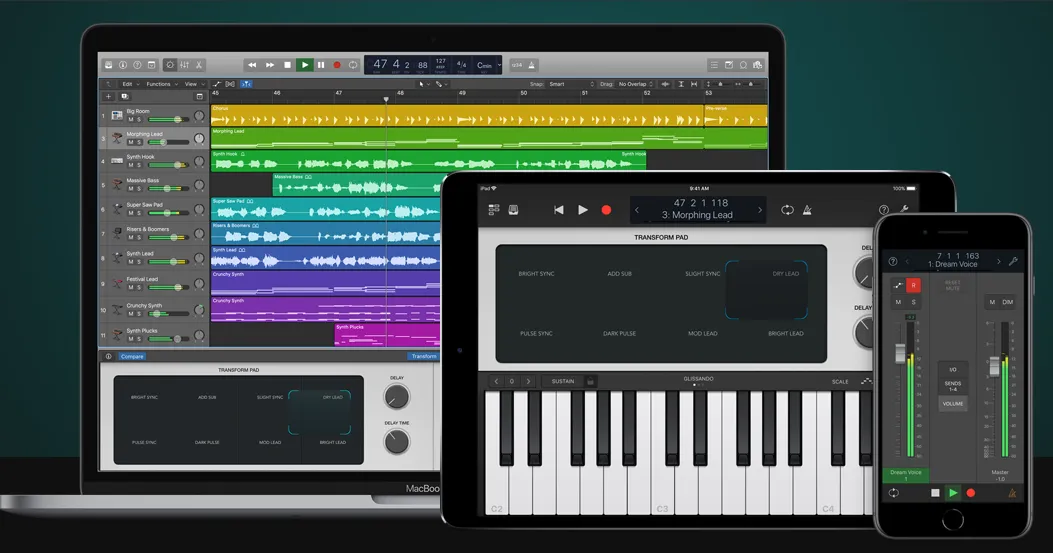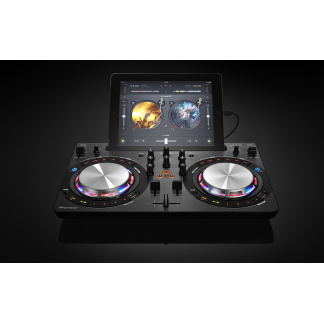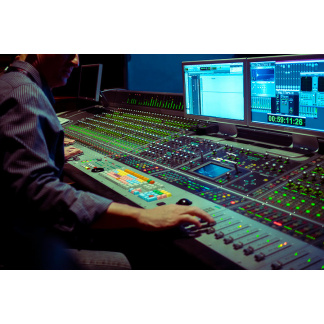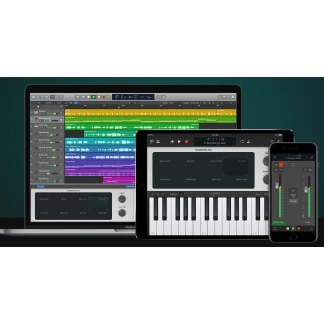Description
Session 1 – Introduction to Logic
- Acquiring Logic, Installing extra content
- Installing KeyCommands file and changing preferences for use as a visually impaired user
- Installing and setting up Zoom on the Mac (mobile Zoom will not work as well for these lessons)
Session 2 – Basic Recording
- The creating session dialog (setting initial tempo and time signature, and track types to start project with)
- Configuring the hardware and software, testing with a quick recording and configuring the metronome/click
- Recording audio tracks
- Recording software instruments/Midi
- Quick overview of the library and Event List for great starting points for sounds and basic Midi editing
- Saving your project/basic file management
Session 3 – Navigating and Editing the Project
- Different ways to move through the project timeline
- Selecting tracks and regions
- Track sorting, splitting regions, copying, cutting and pasting, deleting regions and tracks
- Other important editing commands (nudging, shuffling, moving regions to playhead, etc.)
Session 4 – Getting Familiar with Logics Interface
- Overview of the interface, inspector, library, mixer, smart controls, etc.
- Manipulating tracks and regions with the inspector
- Using the piano roll to edit Midi
Session 5 – Drummer PT 1
- Introduction to the Drummer
- Building out a drum track using the Drummer
Session 6 – Drummer PT 2
- Convert Drummer regions to Midi to edit
- Using the event list to edit Midi
- Converting Drummer track to a multi out software instrument for flexibility when mixing
Session 7 – Loop Browser and Working with Non-AppleLoops
- Using the loop browser
- Importing audio, Midi or non-AppleLoops to a project
- Working with loops with non-embedded tempo and different ways to snap it to tempo (Adapt Tempo, FlexTime Etc)
- Transpose audio up and down like Midi (FlexPitch)
Session 8 – Arranging with Locators
- Building out the rest of track quickly/playing with arrangement ideas with locators
Session 9 – Starting the Mix
- Overview of DAW Signal Flow (channel strip, aux/sends, track stacks, etc.)
- Discussion on the different elements of a mix
- Discussion of gain staging
- Creating the static mix
Session 10 – Continuing the Mix with EQ
- Instantiating and using an EQ across all the tracks, and using it to enhance them
Session 11 – Continuing the Mix with Compression
- Instantiating and using a compressor across all the tracks, and using it to enhance them
- A brief discussion and demonstration of side chaining
Session 12 – Spatial Effects (Delays & Reverbs)
- Discussion of insert and send effects, and how they differ from each other, and when and how to use them
- Instantiating spatial effects, reverbs, delays, and using them throughout the mix
Session 13 – Stereo Output/Master and Other Effects
- Overview of de-esser, saturation and other effects
- Limiter and basic mastering
Session 14 – Automation
- Automating track parameters like volume, pan, send level, and fade out for end of song
- Automating effects parameter
Session 15 – Bouncing/Exporting Archiving
- Bouncing the completed project
- Discussion of different file formats for exporting and sharing options built into Logic
- Exporting multi tracks and stems and options for long term archiving, sending files to someone else to mix or for collaboration
Session 16 – Creating Templates and Saving Patches
- Saving patches of sounds you enhanced/created
- Creating a template so you have good starting points going forward
Session 17 – Q&A and What’s Next
- Answer questions about what we covered and where one can go from here with these skills, beat leasing (It’s not just for hip-hop/RnB beats), music licensing, etc.





